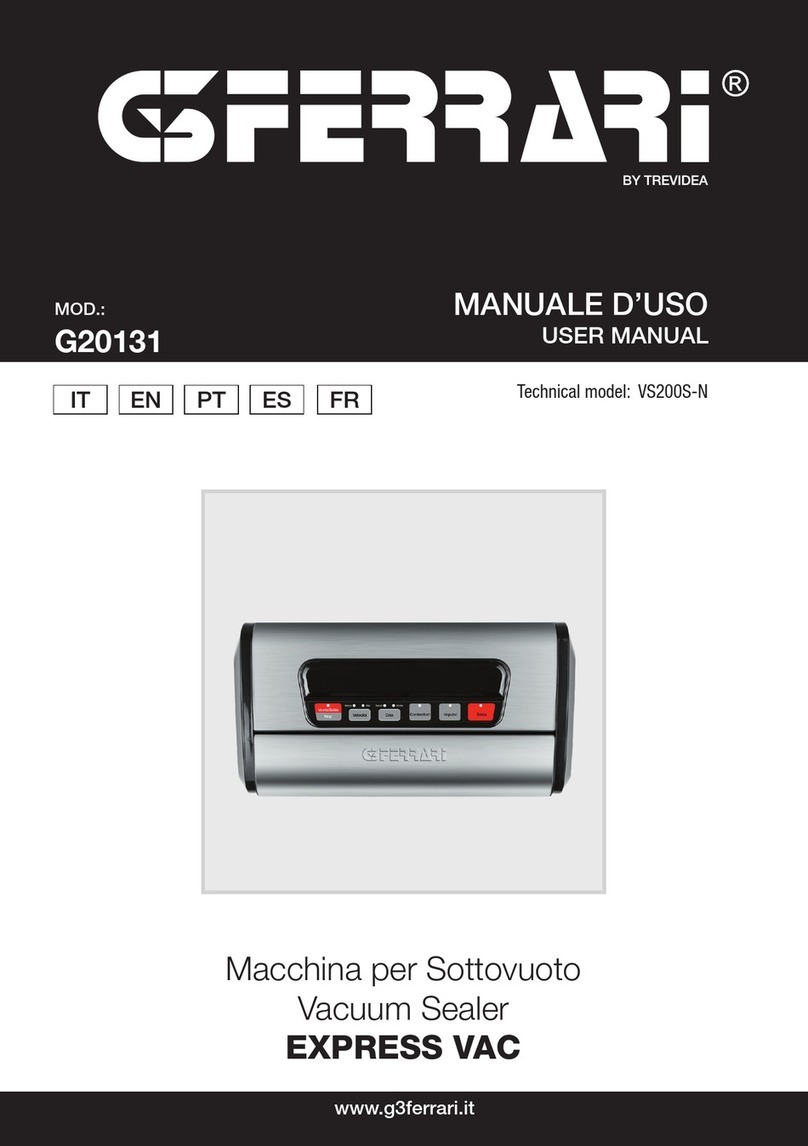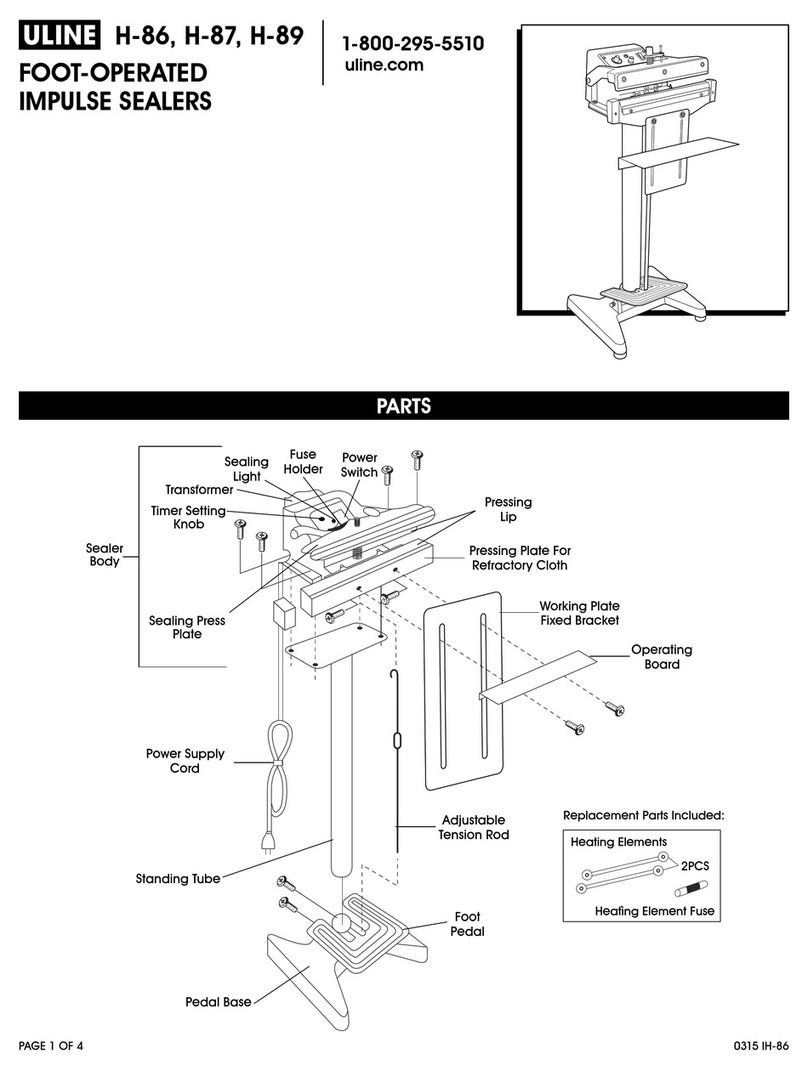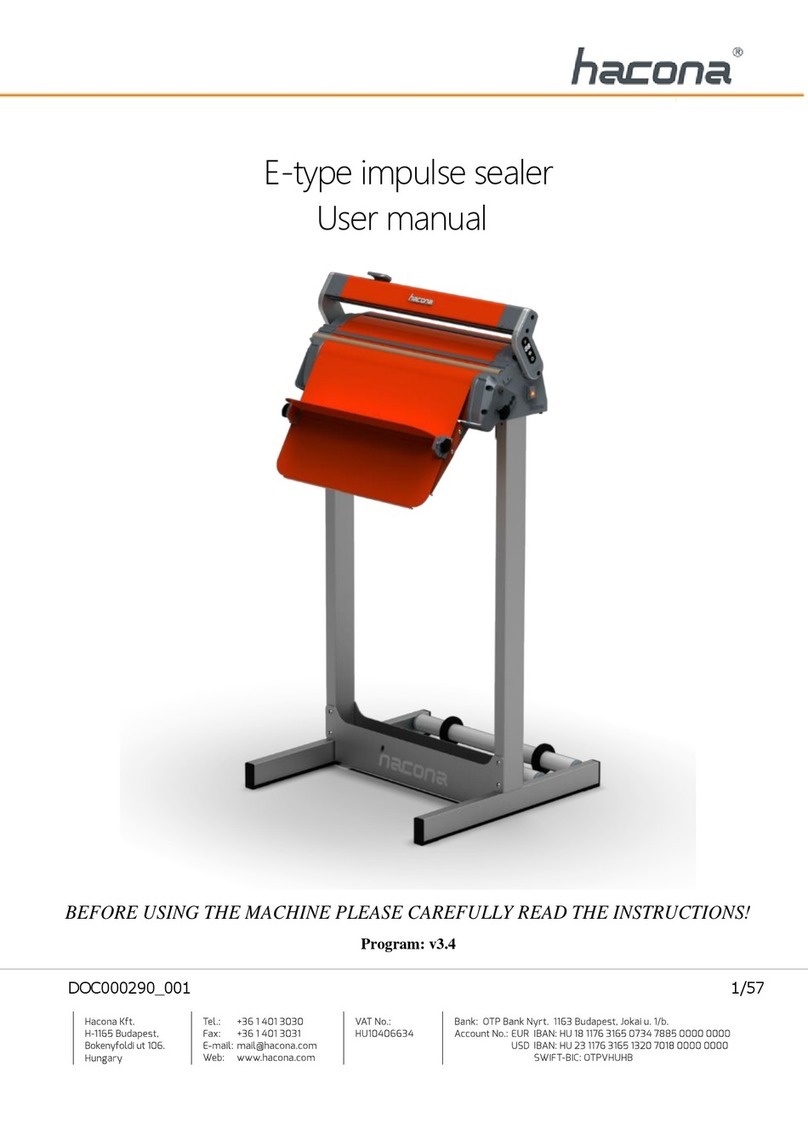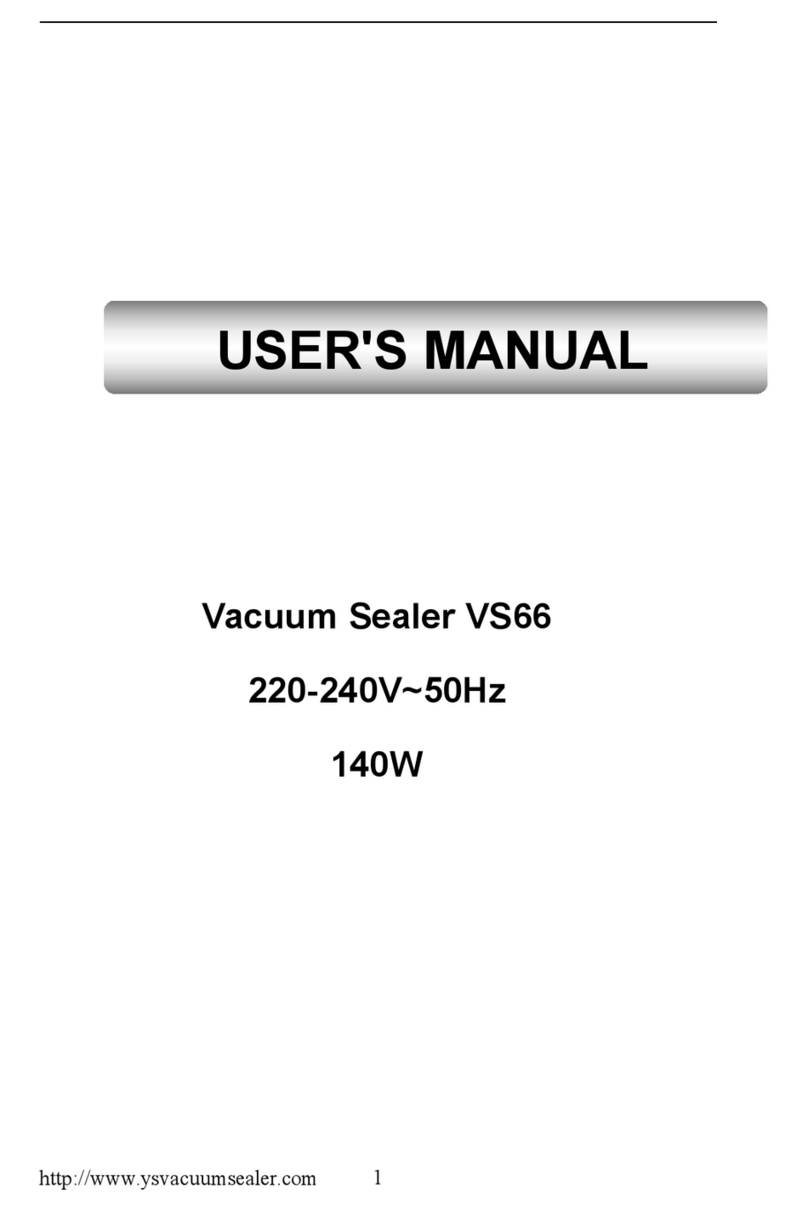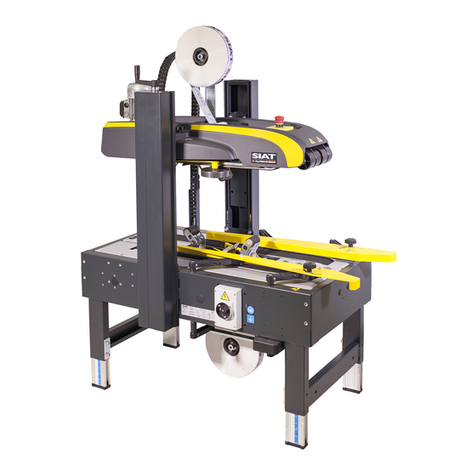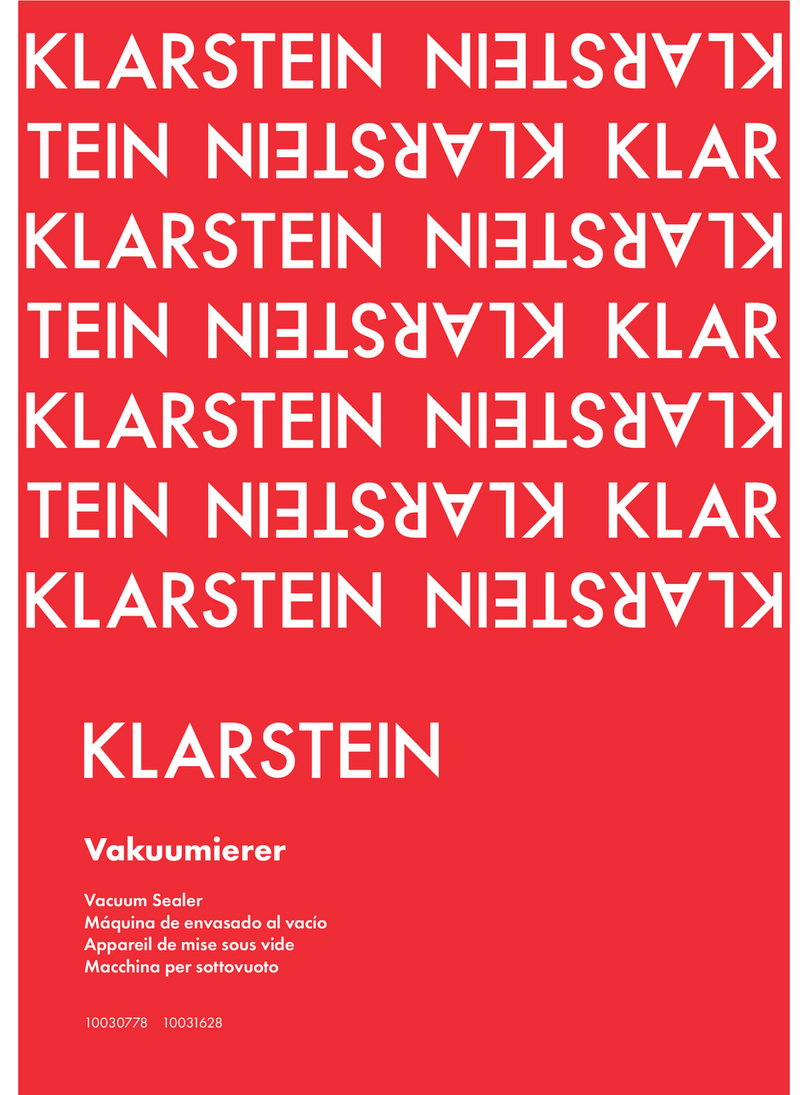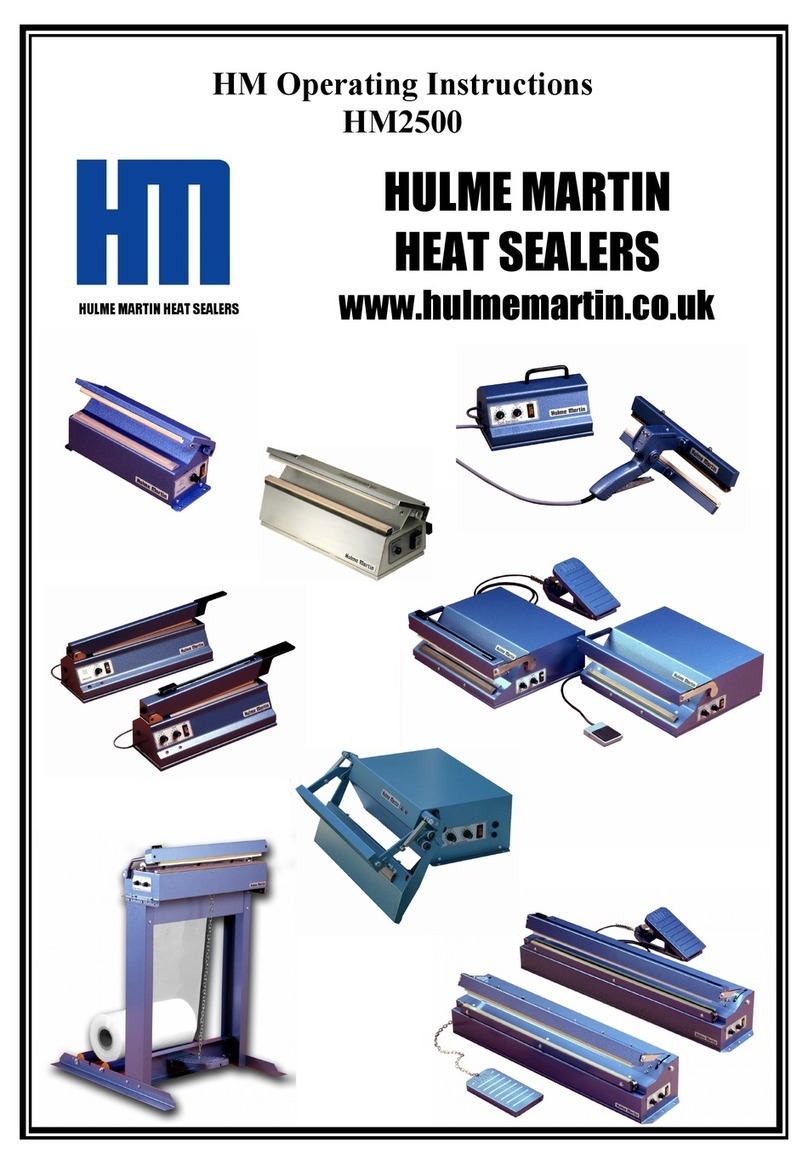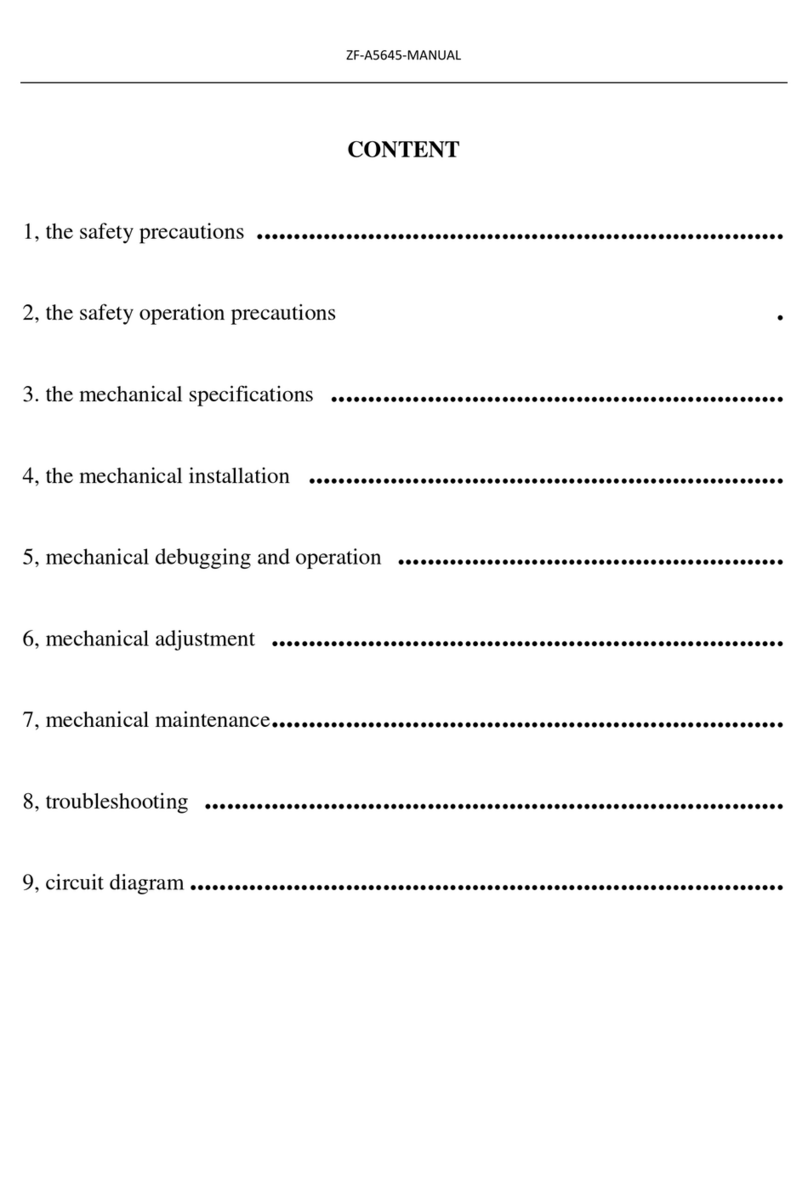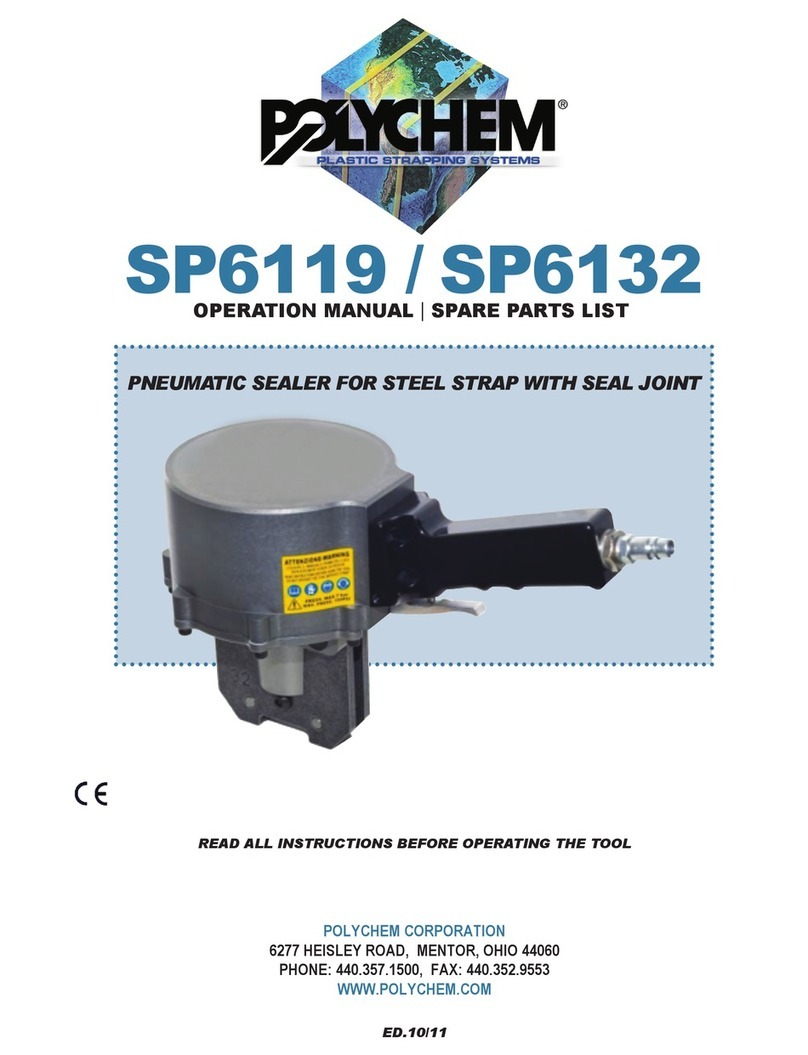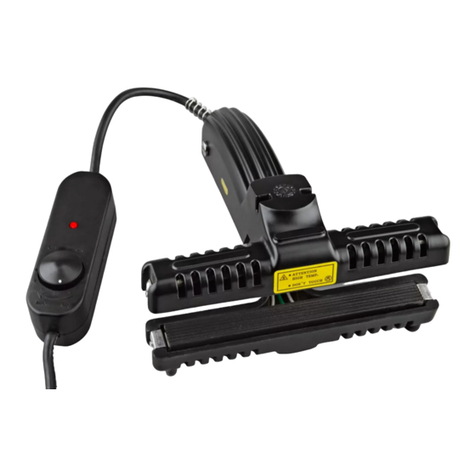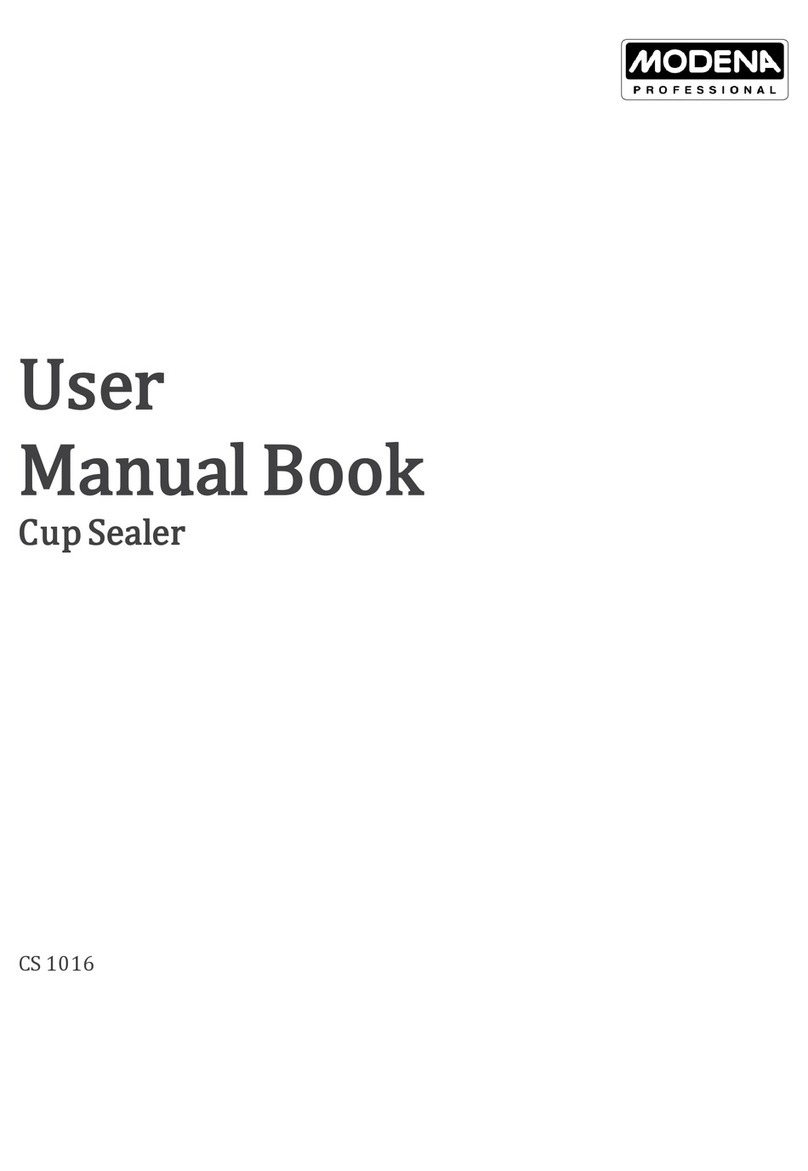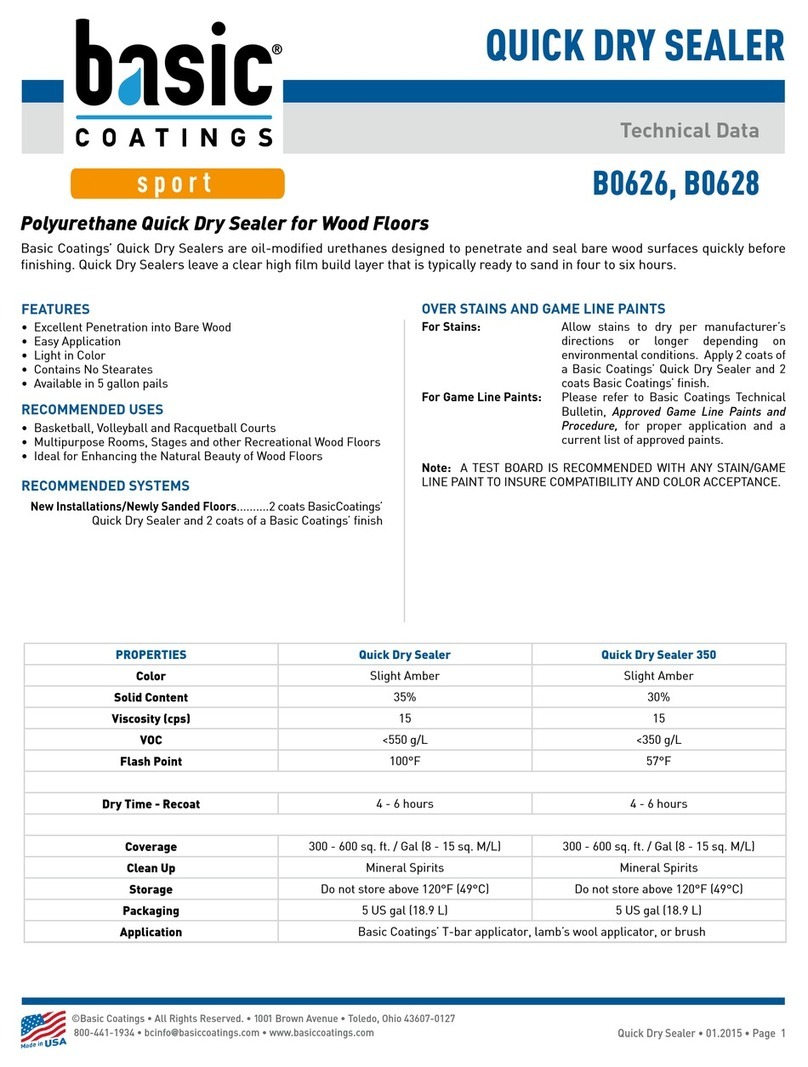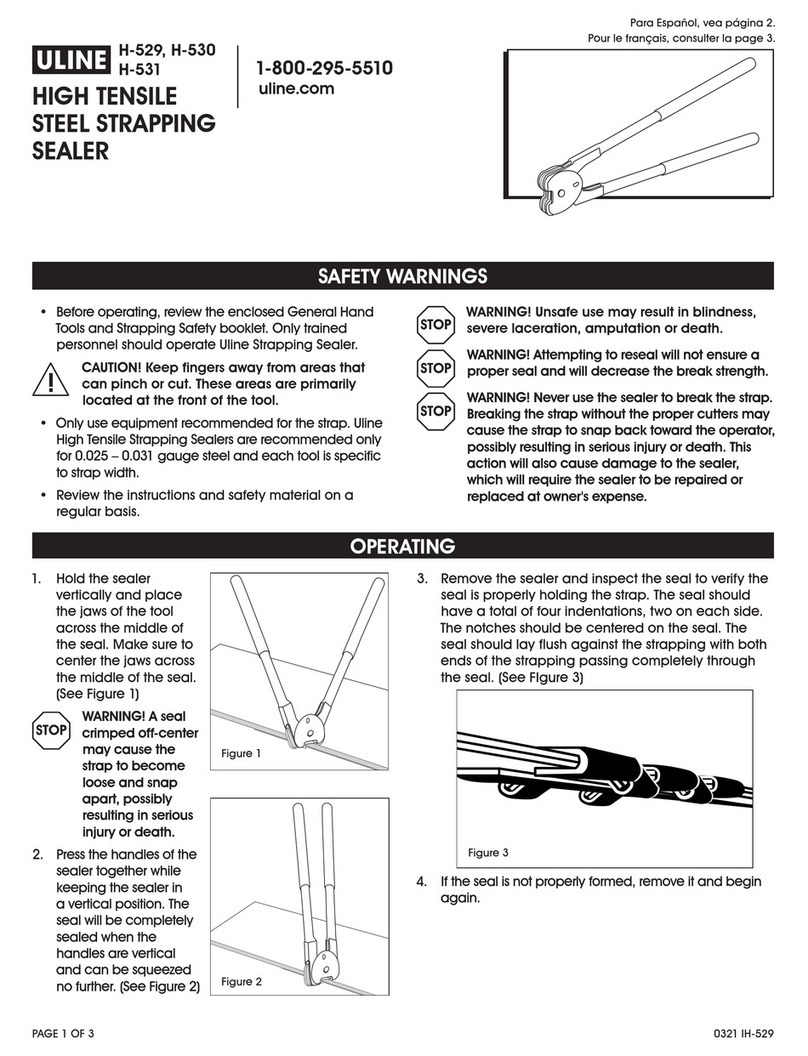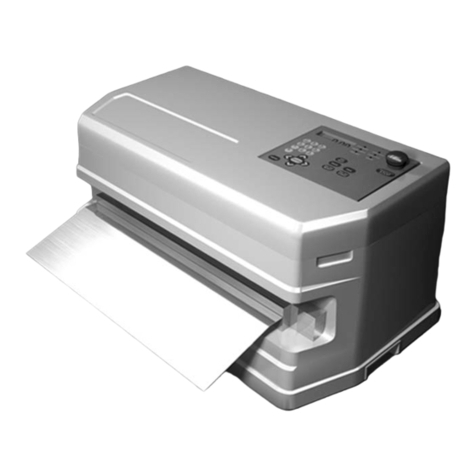Audion D 552 AVT User manual

UserM anual
Al l - I n Se al e r
v e r
D 552 AVT / D 552AVT S
User Manual
www.audion.com
All-In Sealer
D 552 AVT / D 552 AVTS
D 552 AVT(S) ENG Rev.04

All-In Sealer
D 552 AVT / D 552 AVTS
Original Instructions
All rights reserved.
No part of this publication may be reproduced and/or published by means of
print, photocopy, or in any other way, without prior written permission from
Audion Elektro BV.
Audion Elektro BV reserves the right to modify the machine and/or change the
operating manual without prior notice.
Audion Elektro BV is not liable for any damage caused by specifications
deviating from the standard version.
Although this manual was compiled with the utmost care, Audion Elektro BV
does not accept any liability for any mistakes it may contain and/or the
consequences of any incorrect interpretation of its contents.
Audion Elektro BV is not liable for any damage or problems resulting from the
use of parts other than original parts. If this manual does not provide
instructions for certain repairs, adjustments or maintenance, please contact your
dealer or Audion Elektro BV.

Please read this operating
manual carefully before using
the sealer or carrying out
maintenance on it.
[*****]
The sealer is part of the Audion
product range. We also provide:
•Impulse sealers.
•Heat sealers.
•Continuous sealers.
•Vacuum sealers.
•Vacuum chambers.
•Shrink machines.
•Validatable sealers.
•Form, fill and seal machines.
Since its inception in 1947, Audion
has gained a lot of experience and
expertise with a wide variety of
sealing and packaging machines.
Our solutions for packaging
problems are unique. Our many
years of experience together with
our modern production, assembly
and testing methods ensure that our
packaging machines meet the
highest quality standards. We can
also customise the machines
according to your specific
requirements.
Audion is the right supplier for a
packaging machine that is geared to
your requirements.
[*****]

All-In Sealer
D 552 AVT / D 552 AVTS
4 Table of Contents
Table of Contents
1 Introduction.......................................................................................................................... 6
1.1 Manufacturer .......................................................................................................... 6
1.2 Machine Type Plate................................................................................................ 6
1.3 Warranty Conditions and Liability......................................................................... 6
2 Safety.................................................................................................................................... 8
2.1 Symbols Used in This Manual............................................................................... 8
2.2 User......................................................................................................................... 8
2.2.1 Operating Personnel.......................................................................................... 8
2.2.2 Maintenance Personnel..................................................................................... 8
2.3 Safety Instructions ................................................................................................. 9
2.3.1 General Safety Instructions............................................................................... 9
2.3.2 What to do in case of Fire................................................................................ 10
2.3.3 Use for Special Applications ........................................................................... 10
2.4 Safety Provisions.................................................................................................. 11
2.5 Safety symbols..................................................................................................... 11
3 Installation.......................................................................................................................... 12
3.1 Unpacking the Sealer ........................................................................................... 12
3.2 Placing the Sealer................................................................................................. 12
3.3 Connecting the Sealer.......................................................................................... 12
3.4 Adjusting the Sealer............................................................................................. 13
3.4.1 Adjusting the Sealing Unit Height .................................................................. 13
3.4.2 Adjusting the Horizontal Distance for the Conveyor Belt.............................. 13
3.4.3 Adjusting the Conveyor Belt Height ............................................................... 14
4 Description of the Sealer ................................................................................................... 15
4.1 Function ................................................................................................................ 15
4.2 Overview of the Sealer......................................................................................... 16
4.3 Control Panel ........................................................................................................ 17
4.3.1 Cool Run mode ................................................................................................ 18
5 Operation............................................................................................................................ 19
5.1 Preparing the Sealer for Production.................................................................... 19
5.1.1 Switching on the Sealer .................................................................................. 19
5.1.2 Setting the Sealing Temperature and the Conveyor Belt Speed .................. 19
5.1.3 Switching on the heating, the cooling and the fan ........................................ 20
5.1.4 Starting the Sealer........................................................................................... 21
5.2 Sealing .................................................................................................................. 21
5.3 Stopping the Sealer (STANDBY mode)............................................................... 22
5.4 Emergency stop.................................................................................................... 22
5.4.1 Restarting After an Emergency Stop .............................................................. 23
5.5 Switching Off the Sealer Completely .................................................................. 23
6 Troubleshooting................................................................................................................. 24
7 Maintenance....................................................................................................................... 26
7.1 Maintenance Schedule......................................................................................... 26
7.1.1 Daily maintenance ........................................................................................... 26

Table of Contents 5
7.1.2 Weekly maintenance ....................................................................................... 26
7.1.3 Annual maintenance........................................................................................ 26
7.2 Switching Off the Sealer and Opening the Protective Cover............................. 27
7.3 Replacing the PTFE Belts ..................................................................................... 28
7.4 Replacing V-belts.................................................................................................. 30
7.5 Adjusting the V-belts............................................................................................ 30
7.6 Replacing the heating elements .......................................................................... 31
7.7 Adjusting the Contact Force of the Heating Blocks ............................................ 33
7.8 Adjusting the Contact Force of the Press Rollers ............................................... 34
7.9 Adjusting the Contact Force for the Cooling Plates............................................ 34
7.10 Adjusting the Contact Force of the After-press Rollers...................................... 35
7.11 Adjusting the Conveyor Belt Tension.................................................................. 35
7.12 Motor Set-up......................................................................................................... 36
7.13 Correction factor................................................................................................... 36
7.14 Reset to factory settings ...................................................................................... 36
8 Disposing of the Sealer ..................................................................................................... 37
8.1 WEEE Directive..................................................................................................... 37
8.2 Correct Disposal for Reuse .................................................................................. 37
A Technical Information........................................................................................................ 38
A.1. Dimension drawing.............................................................................................. 38
A.2. Technical Data ...................................................................................................... 39
B Electrical Diagram.............................................................................................................. 40
C Spare Parts ......................................................................................................................... 42
C.1. Wearing parts ....................................................................................................... 42
C.2. Exploded views .................................................................................................... 43
D Log ...................................................................................................................................... 55
D.1. Maintenance Log.................................................................................................. 55
E EC Declaration.................................................................................................................... 56
F Options.................................................................................................................................. 57

All-In Sealer
D 552 AVT / D 552 AVTS
6 Introduction
1Introduction
[*****]
1.1 Manufacturer
The sealer was manufactured by:
Audion Elektro BV
Hogeweyselaan 235
1382 JL Weesp
T
he Netherlands
Telephone:
+31 (0)294 491717
Fax:
+31 (0)294 491761
Email:
Web:
www.audion.com
[*****]
1.2 Machine Type Plate
The sealer has a CE marking. This means that the sealer meets the fundamental
health and safety requirements of the European Communities.
1.3 Warranty Conditions and Liability
Subject to the limitations stated below, we provide a 12-month warranty for the
products we deliver. This warranty is limited to manufacturing defects and
therefore does not cover any malfunctions caused by any form of wear, or any
part of the delivered product that is subject to wear.
•The warranty we provide for parts or accessories purchased from third parties
is limited to the warranty the third-party provided to us.
•The warranty is void if the other party and/or any third parties engaged by
them use the product in a way it is not intended for.
•The warranty is also void if the other party, and/or any third parties engaged
by them carries out work and/or modifications on the delivered product.
•Any parts we replace in order to meet our warranty obligations become our
property.

Introduction 7
•Should the other party not meet obligation resulting from the agreement
entered into between the parties in whole or in part or in a timely manner, we
are not obliged to provide warranty for as long as that situation continues.
We exclude all liability to the extent that the liability is not regulated by law. Our
liability will never exceed the total amount of the order in question.
Subject to the generally applicable legal rules of public order and good faith, we
are not obliged to pay compensation to the other party or any third party for
damages of any nature whatsoever, incurred directly or indirectly, including
trading loss and damage to movable or immovable property or persons.
In no case are we liable for any damage resulting from or caused by using the
delivered product or its unsuitability for the purpose for which the other party
purchased it.

All-In Sealer
D 552 AVT / D 552 AVTS
8 Safety
2Safety
[*****]
2.1 Symbols Used in This Manual
The following symbols are used in this user manual:
[*****]
A tip on how a task can be carried out more efficiently.
[*****]
Instructions for carrying out a task in the correct manner.
[*****]
Danger of injury to the user or damage to the sealer if the instructions
are not observed.
[*****]
2.2 User
[*****]
The sealer should only be operated by authorised personnel.
[*****]
Improper use of the sealer may lead to serious personal injury and
considerable material damage.
[*****]
Keep bystanders at a distance. Do NOT allow unauthorised personnel
to operate the sealer.
[*****]
2.2.1 Operating Personnel
The company using the machine has organised a training session to inform its
operating personnel of the potential risks of unprofessional behaviour while
carrying out their tasks.
[*****]
Installation, maintenance and repair require specialised knowledge,
which is why these tasks should only be performed by maintenance
personnel.
[*****]
Observe the safety instructions in this user manual. Failure to observe
the safety instructions may cause unacceptable risks.
The operating personnel must be familiar with all chapters of this user manual
with the exception of ‘Installation’ and ‘Maintenance’. Always observe the
following safety instructions before using the sealer or carrying out any
maintenance work.
2.2.2 Maintenance Personnel
These personnel’s professional training, knowledge and experience, and
knowledge of the manufacturer’s terms enable them to carry out the assigned
work and immediately recognise any risks that may arise.
[*****]
Observe the safety instructions in this user manual. Failure to observe
the safety instructions may cause unacceptable risks.
The maintenance personnel must be familiar with all chapters of this user
manual. Always observe the following safety instructions before using the sealer
or carrying out any maintenance work.

Safety 9
2.3 Safety Instructions
The sealer meets the fundamental health and safety requirements of the
European Community. This means that the sealer can be operated and
maintained safely if all safety instructions are carefully observed. However,
improper or careless use can create dangerous situations.
[*****]
Observe the safety instructions in this user manual. Always remain
alert to dangerous situations and avoid any improper or careless use.
[*****]
2.3.1 General Safety Instructions
Observe the following general safety instructions:
•Tie back long hair.
•Do not wear loose clothing or jewellery.
•Always wear the personal protective equipment (PPE) prescribed by the
company, such as safety shoes, gloves and goggles.
[*****]
Use the PPE required on the shop floor, such as safety shoes, gloves
and goggles and/or hearing protection, in particular when carrying out
maintenance work.
•Check the operation of the sealer every day.
•Keep your hands away from dangerous parts of the sealer.
•Always leave protective covers in place during production.
•Never bypass or deactivate any safety provisions.
•The sealer should never be operated or maintained by people who are under
the influence of alcohol, medication and/or drugs.
•Only use sealable material that is suitable for the sealer.
•The user is obliged to observe the normally applicable hygienic measures.
•If you are not sure whether the sealer is working properly, switch it off
immediately and consult the maintenance personnel.
•Both the user and the sealer must be supervised while the sealer is in use.
•Do not switch the sealer back on until the malfunction has been repaired.
•Should any liquid or foreign object enter the machine, switch off the sealer
and immediately remove the plug from the wall socket and have the sealer
checked by maintenance personnel before using it again.

All-In Sealer
D 552 AVT / D 552 AVTS
10 Safety
•Should an unusual event occur, such as the development of smoke, remove
the plug from the socket immediately and have the sealer checked by
maintenance personnel before using it again.
•Remove the plug from the socket before carrying out any maintenance work.
•Never open the sealer’s housing while it is connected to the mains power.
•Do not use any water, abrasive cleaning agents, chemical solvents or other
liquids when cleaning the sealer.
2.3.2 What to do in case of Fire
[*****]
NEVER use water to extinguish a fire. This may result in life-
threatening situations because the sealer may be electrically live.
Should the sealer catch fire, never use water to extinguish the fire. Because the
machine is live, this may result in life-threatening situations. A fire extinguisher
must be within reach when the sealer is in use. The following types of fire
extinguishers are suitable to extinguish a burning sealer.
•Powder extinguisher.
•Foam extinguisher.
2.3.3 Use for Special Applications
[*****]
If the machine is used in a special environment, the company using the
machine must ensure that any instructions specific to that
environment are observed.
•If the machine is used in a sterile environment or cleanroom, the company
using the machine must ensure that any instructions specific to that
environment are observed.
•If the machine is used for the packaging of medical instruments, the company
using the machine must ensure that any instructions specific to that
environment are observed.
•If the machine is used for the packaging of food, the company using the
machine must ensure that any instructions specific to that environment are
observed.

Safety 11
2.4 Safety Provisions
The sealer has the following safety provisions:
1. Safety covers.
−Electrical and mechanical parts in the housing are protected.
2. Metal parts are earthed.
−No dangerous voltage can develop between (external) metal parts and
the earth.
3. Fuse in 230 V circuit.
−If the maximum current is exceeded, the fuse will blow, cutting off the
power supply.
4. Emergency stop button
−In the event of a hazard, this can be used for switching off the sealer
immediately and completely.
2.5 Safety symbols
The following safety symbols have been applied on the All-In Sealer:
[*****]
Hot surfaces
On the front of the All-In Sealer on the cover.
There are heating elements and it may
therefore get hot.
[*****]

All-In Sealer
D 552 AVT / D 552 AVTS
12 Installation
3Installation
[*****]
3.1 Unpacking the Sealer
Check the following when unpacking the sealer:
1. Have all parts and accessories been delivered?
−Sealer
−User manual
[*****]
The sealer is packaged in environmentally friendly material that may
be disposed of as ordinary household waste.
[*****]
Keep the crate and the packaging material so that the sealer can be
transported safely again if necessary.
[*****]
3.2 Placing the Sealer
[*****]
1.
Move the sealer to the desired location.
2. Lock the wheels by pressing the brakes
down with your foot.
[*****]
3.3 Connecting the Sealer
*****]
1.
Check that the main switch is in the ’0’
position.

Installation 13
2.
Insert the plug in the wall socket.
[*****]
3.4 Adjusting the Sealer
The following adjustments can be made:
•The height of the sealing unit with respect to the conveyor belt; to adjust for
the height of the bags.
•The horizontal distance between conveyor belt and sealing unit; to adjust for
the positioning of the bags on the conveyor belt.
•The height of conveyor belt with respect to the floor, to adjust the working
height.
3.4.1 Adjusting the Sealing Unit Height
The sealing unit height can be adjusted as follows:
[*****]
1.
Set the sealing unit height by turning the
crank.
[*****]
The top of the bag to be sealed should b
e able to move freely along the
top of the infeed guide.
[*****]
3.4.2 Adjusting the Horizontal Distance for the Conveyor Belt
The horizontal distance of the conveyor belt with respect to the sealing unit is
adjusted as follows:
[*****]

All-In Sealer
D 552 AVT / D 552 AVTS
14 Installation
1.
Loosen the four locking
bolts a few turns.
2. Adjust the position of the conveyor belt
with respect to the sealing unit by shifting
the conveyor belt.
3. Tighten the locking bolts again.
[*****
The position of the conveyor belt must be set so that the bags that are
to be sealed are in the middle of the conveyor belt.
[*****]
3.4.3 Adjusting the Conveyor Belt Height
The conveyor belt height can be adjusted with respect to the sealing unit as
follows:
[*****]
1.
Loosen the two mounting nuts at the back
of the conveyor belt brackets
2. Take the conveyor belt from the frame.
3. Position the conveyor belt on the frame at
the desired height.
4. Tighten the mounting nuts again.
[*****]
Make sure two persons take the conveyor belt from the frame and re-
position it.
[*****]
The height of the conveyor belt must line up with the infeed and
outfeed belts.
[*****]

Description of the Sealer 15
4Description of the Sealer
[*****]
4.1 Function
The All-In Sealer is a band sealer for packaging a wide variety of products in large
quantities. The products are packaged in ready-to-use bags and then sealed. The
sealer can be used for sealing ready-made bags made of polyethylene (PE),
polypropylene (PP), thin PVC and various laminates with thicknesses of between
20µm and 150µm.
[*****]
Never use the All-In Sealer for any other purpose.
[*****]
The sealer is not suitable for the following applications:
•use in cleanroom environments
•use in medical or sterile environments
•use in explosive environments
•use with toxic, suffocating or irritant gases
•use in dusty environments

All-In Sealer
D 552 AVT / D 552 AVTS
16 Description of the Sealer
4.2 Overview of the Sealer
[*****]
1. Housing
2. Control panel
3. Conveyor belt
4. Setting the distance and height of the sealing unit with respect to the
conveyor belt.
5. Frame with wheels
The sealer consists of a wheeled frame on which there is a conveyor belt and a
housing. The housing comprises the electrical and drive components; the
operating panel is mounted on top of the housing. During maintenance work, the
housing can be tilted to make the interior easily accessible.
The conveyor belt transports the bags that are to be sealed past the heating
blocks, the press rollers, the cooling plates and the after-press rollers that are
located inside the housing.
The height of the conveyor belt can be adjusted to let it line up seamlessly with
the infeed and outfeed belts. The vertical distance between the conveyor belt and
the housing can also be adjusted so that bags of various different heights can be
sealed. The horizontal position of the conveyor belt with respect to the sealing
unit can be adjusted to position the bags as centrally as possible on the conveyor
belt.

Description of the Sealer 17
4.3 Control Panel
[*****]
[*****]
1.
Display
Gives the current sealing temperature, speed or
an error message. The setpoint value will be
shown while the settings are being adjusted.
2.
Prog
Press this to change the settings menu of the
sealer. A LED next to the button will show which
setting is being adjusted:
Temp, the sealing temperature.
Speed, the conveyor belt speed.
Sync., synchronising the sealing speed and the
speed of the conveyor belt.
3.
Up/Down
Press these to increase or reduc
e a setting.
4.
Emergency stop button
If a dangerous situation occurs, this will switch off
the sealer immediately and completely.
5.
Start/Stop
Press to start or stop the sealer. A LED above the
button shows whether the sealer is switched on or
off. If the current sealing temperature is above
80°C when the sealer is switched off, it will first
switch to ‘cool run’ mode.
6.
Heat
Press this to switch the heating on or off. A LED
above the button indicates whether the function is
switched on or off.
7.
Fan
Press this
to switch the fan on or off. A LED above
the button indicates whether the function is
switched on or off.
8.
Motor
Press this to switch the motor on or off. A LED
above the button shows whether the function is
switched on or off.
9.
Main switch
Switch for tur
ning the sealer on or off.

All-In Sealer
D 552 AVT / D 552 AVTS
18 Description of the Sealer
4.3.1 Cool Run mode
The ‘cool run’ mode avoids burnt spots on the PTFE belts. After the machine has
been stopped, the heater is switched off; however, the fan and the motor will
continue to run. When the sealing temperature has dropped below 80°C, the
sealer is switched to standby mode. The fan and the motor will then also be
switched off.

Operation 19
5Operation
[*****]
5.1 Preparing the Sealer for Production
[*****]
5.1.1 Switching on the Sealer
Switch the sealer on as follows:
[*****]
1.
Set the MAIN SW
ITCH to ’1’.
2. Turn the EMERGENCY STOP BUTTON
clockwise if necessary to reset it.
[*****]
Put the plug in the socket first if necessary.
[*****]
5.1.2 Setting the Sealing Temperature and the Conveyor Belt Speed
The sealing temperature and conveyor speed can be adjusted as follows:
[*****]
1.
Press the
PROG
button until the TEMP LED
is lit.
2. Press the ARROW keys to raise or lower
the sealing temperature.
[*****]
The guideline sealing temperature is 100°C
[*****]
[*****]
3.
Press the PROG button until the SPEE
D
LED is lit.
4. Press the ARROW button to increase or
reduce the speed of the conveyor belt.
[*****]
The guideline value for the conveyor belt speed is 50.
[*****]
[*****]

All-In Sealer
D 552 AVT / D 552 AVTS
20 Operation
5.
Press the PROG button until the current
sealing temperature is shown in the
display again.
[*****]
The TEMP LED will blink if the setpoint temperature differs from the
current sealing temperature by more than 5°C.
[*****]
Make a number of trial seals and readjust the sealing temperature and
speed as necessary.
[*****]
5.1.3 Switching on the heating, the cooling and the fan
Switch on the heating, the cooling and the fan as follows:
[*****]
1.
Press the HEAT button.
2. Press the MOTOR button.
[*****]
The heating and the transport motor must always be switched on
before use.
[*****]
[*****]
3.
Press the FAN button if necessary.
[*****]
If a paper or aluminium laminate film is being used, the FAN does not
have to be switched on.
Do be sure to switch on the fan when using PE films.
[*****]
This manual suits for next models
1
Table of contents
Other Audion Food Saver manuals


